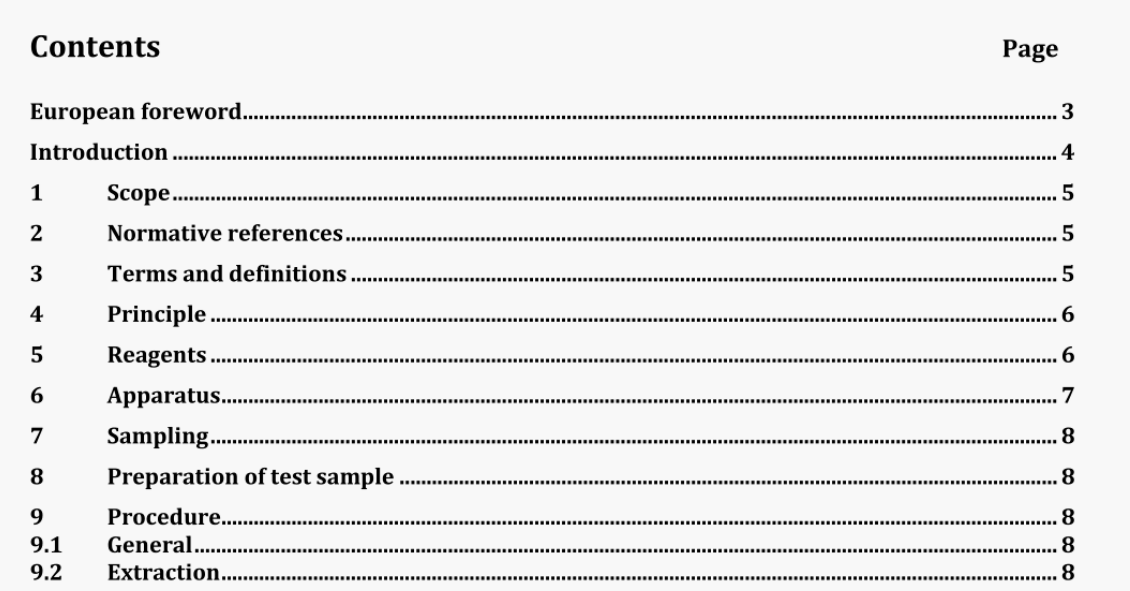BS EN 17298:2019 pdf download.Animal feeding stuffs一Methods of sampling and analysis一Determination of benzoic and sorbic acid by High Performance Liquid Chromatography (HPLC)
1 Scope
This document specifies a method for the determination of benzoic acid and sorbic acid in animal feeding stuffs by high-performance liquid chromatography method with ultraviolet detection (HPLC-UV). The method is intended to be used for the determination of benzoic acid and sorbic acid as active substances in feed additives, premixtures, feed materials and compound feed and for benzoic acid in water. This method determines the total extractable concentration of these organic acids and their salts. It is advisable that the working range of the method is determined for each organic acid by the user of this standard. The lower limit of the working range depends on the matrix and the interferences encountered. It is advisable that a working range between 5 mg/l and 100 mg/l is accessible. The method was successfully tested in an inter-laboratory study in concentrations between 0,02 % up to 9,0 %. On the basis of the referred working range, sample weight and extraction volume, limits of quantification (L0Q), as calculated (Table 1) on the basis of a wavelength of 230 nm, can be achievable.
4 Principle
The sample is extracted with a mixture of sodium acetate buffer and methanol. The extract is filtered or centrifuged and – if necessary – diluted. The amount of organic acids extracted from the sample is determined with high-performance liquid chromatography (HPLC), applying a RP 18 column, in conjunction with diode array detection (DAD) or ultraviolet detection (UV). The quantification is carried out by an external calibration. WARNING- The use of this European Standard can involve hazardous materials, operations and equipment. This standard does not purport to address all the safety problems associated with its use. It is the responsibility of the user of this European Standard to establish appropriate safety and health practices and determine the applicability of regulatory limitations prior to use.
9.5 Confirmation of identity
The identification of benzoic and sorbic acid can be done by a wavelength scan between 210 nm and 400 nm. The UV spectrum of the peak in the sample should correspond to that of the standard peak at the relevant retention time. The identity of the target analyte(s) can also be confirmed by co-chromatography. Prepare a spiked sample extract by adding an appropriate amount of calibration solution (9.2) of the organic acid in question to the sample extract. The amount of organic acid added shall be approximately equal to the estimated amount of the corresponding organic acid detected in the sample extract. Inject the spiked sample extract. If the signal detected in the chromatogram obtained in 9.3 was linked to the detection of the organic acid, only this signal intensity should increase. The related peak height increase should be proportional to the spiking level of the organic acid and the related peak width at half height should increase by no more than +10 % of the original width.
BS EN 17298:2019 pdf download
